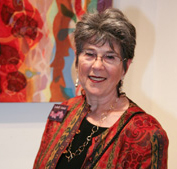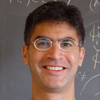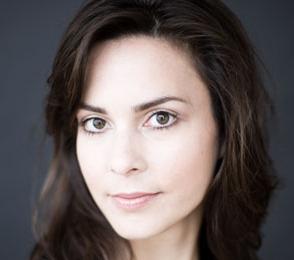|
The LASERs are a national program of evening gatherings that bring artists and scientists together for informal presentations and conversation with an audience. See the program for the whole series.
Leonardo ISAST and Stanford Continuing Studies invite you to a meeting of the Leonardo Art/Science community.
See below for location and agenda.
The event is free and open to everybody. (Stanford calendar: click here)
Email me if you want to be added to the mailing list for future LASERs.
Like previous evenings,
the agenda includes some presentations of art/science projects,
news from the audience, and time for casual socializing/networking.
See also...
An Evening of BioArt - July 31st
Stanford interdisciplinary panels
Stanford events calendar
DASERs
Art, Technology, Culture Colloquia
ScienceSchmoozer
Previous Art/Science Evenings
When: 8 August 2012
Where: Stanford University
Building/Room: Geology Corner/ Braun Hall - room 105
(Stanford map)
Parking is mostly free at Stanford after 4pm.
What:
- 6:45pm-7:00pm: Socializing/networking.
- 7:00-7:25:

- Sydell Lewis on "Why Upside Down? Paintings that Rotate"
Is it essential to view an abstract work as the artist originally intended? ....Read more
- 7:25-7:50:

- Shamit Kachru (Stanford Physics Dept) on "Dark energy and dark matter"
....Read more
- 7:50-8:05: BREAK. Before or after the break, anyone in the audience currently working within the intersections of art and science will have 30 seconds to share their work. Please present your work as a teaser so that those who are interested can seek you out during social time following the event.
- 8:05-8:30:

- Indre Viskontas on "Music that Moves: the art and neuroscience of effective performance"
We are constantly bombarded by a cacophony of sounds and yet music still has the power to influence us, often outside our awareness. Read more
- 8:30-8:55:

- Christine Peterson (Foresight Institute) on "The Nanocentury: Bringing Digital Control to the Physical World"
Technology is moving toward the ability to build physical objects with atomic precision, just as we program information with bit-level precision... Read more
- 8:55:
 Piero Scaruffi on the next Leonardo Art/Science evening
I will simply preview the line-up of speakers for the next Leonardo evening.
Piero Scaruffi on the next Leonardo Art/Science evening
I will simply preview the line-up of speakers for the next Leonardo evening.
- 9:00pm-9:30pm: Discussions, more socializing
You can mingle with the speakers and the audience
Bios:
- Shamit Kachru (Stanford) is a Professor of Physics at Stanford University and at the Stanford Linear Accelerator Center. He was a Research Associate at Rutgers University in 1996-1997. He became an Assistant Professor at the University of California at Berkeley in 1997, and moved to Stanford in 1999. He was also a Member of the Institute for Advanced Study at Princeton in 1999. In 2008, he was awarded the 2008 American Chapter of the Indian Physics Association (ACIPA) Outstanding Young Physicist Prize. . Kachru is interested in the physics of string theory and M theory. His previous work has focused on stringy modifications of geometry, duality and exact results in supersymmetric compactifications, and supersymmetry breaking.
- Sydell Lewis is a painter and printmaker. Educated in chemistry, she conducted biomedical research as a mass spectrometrist before becoming a fulltime artist. Her background in science and dance is reflected in her work with its juxtapositions of hard edge rendering and sensual organic forms. In 2005 She pioneered the concept of "Rotating Paintings" to enable viewers to fully comprehend a 2 dimensional abstract work of art. As a printmaker, she was one of the first proponents of the new technique of acrylic monotypes. She is a member of the California Society of Printmakers. Her work has been shown in Los Angeles and the Bay Area in numerous galleries and venues including the San Francisco Arts Commission and Triton Museum. Her work is in numerous private and corporate collections on both coasts.
- Christine Peterson is the co- founder and President of Foresight Institute, a public interest group that educates the community and policymakers on coming powerful technologies such as nanotechnology. She also serves on the Advisory Board of the International Council on Nanotechnology and the Editorial Advisory Board of NASA's Nanotech Briefs. Her work is motivated by a desire to help Earth's environment and traditional human communities benefit from advances in technology. She coauthored Unbounding the Future: the Nanotechnology Revolution (1991) and Leaping the Abyss: Putting Group Genius to Work (1997).
- Piero Scaruffi is a cognitive scientist who has lectured in three continents and published several books on Artificial Intelligence and Cognitive Science, the latest one being "The Nature of Consciousness" (2006). He pioneered Internet applications in the early 1980s and the use of the World-Wide Web for cultural purposes in the mid 1990s. His poetry has been awarded several national prizes in Italy and the USA. His latest book of poems and meditations is "Synthesis" (2009). As a music historian, he has published ten books, the latest ones being "A History of Rock and Dance Music" (2009) and "A History of Jazz Music" (2007). An avid traveler, he has visited 135 countries of the world. His latest book is A History of Silicon Valley, coauthored with Arun Rao, and his first ebook was "A Brief History of Knowledge" (2011), available on Kindle.
- Indre Viskontas straddles the line between music and neuroscience, holding a Master of Music degree in Voice Performance from the San Francisco Conservatory of Music and a PhD in Cognitive Neuroscience from UCLA. An affiliate of the Memory and Aging Center at UCSF, she continues to publish research related to memory and creativity and will join the faculty of the San Francisco Conservatory of Music this fall. An active Bay Area performer, she is the co-founder and director of the opera company "Opera on Tap". She is also the leader of Vocallective, a collective of singers and instrumentalists dedicated to the art of vocal chamber music. Recent appearances include the lead role in L'Etoile, an opera by Chabrier, presented by the Lyric Theater of San Jose, and a recital of contemporary chamber music at Stanford's Campbell Recital Hall. Passionate about bringing science to the public, she co-hosted a 6-episode docuseries on the Oprah Winfrey Network called Miracle Detectives, in which she represented the scientific side of a believer-scientist team investigating real claims of miracles. She continues to educate and provoke the lay public as a host of Point of Inquiry (http://www.pointofinquiry.org/), recently named by Business Insider magazine as one of the top 10 podcasts. She has published more than 30 scientific articles and book chapters and edits the journal Neurocase.
Extended abstracts:
Why Upside Down? Paintings that Rotate.
Sydell Lewis's abstract paintings, mounted on rotating devices, allows the viewer to examine and interpret a work to its full potential. Her thesis is that we do not totally perceive an abstract work unless we view it from more than one position. She analogizes this to how we look at sculpture. We walk around the work to grasp it fully. In the case of paintings or prints she mounts her work on rotation devices so that the audience is still and the work moves thereby giving the viewer access to the complete work. This concept was born of a chain of connecting experiences that started in her early career with an amusing incident in her studio and later developed after attending an exhibition in Aix-en-Provence.
She also raises the following questions: Is it essential to view an abstract work as the artist originally intended? Does the viewers interpretation count as much as the artists if they differ?
She hopes that after her presentation the audience will never look at a work of abstract art without considering it upsidedown, sideways and possibly on the diagonal. She believes that the process of looking at many perspectives is a creative and effective tool for promoting cultural understanding and problem solving as well as looking at art.
The Nanocentury: Bringing Digital Control to the Physical World.
Throughout human history, our species has worked to control the matter surrounding us -- building larger and larger, smaller and smaller, more and more precise. The payoffs from these efforts are starting to accelerate, as we move toward the ability to build physical objects with atomic precision, just as we program information with bit-level precision. What will this mean for our bodies, our minds, our families, our nations, our culture, our planet? There's good news and bad news, but one thing's clear -- we are in for a wild ride!
Dark matter and dark energy.
While we learn about protons, neutrons, and electrons in high
school chemistry, in fact 95% or more of the energy budget of
the Universe today exists in "hidden" forms - dark matter and dark
energy. We'll discuss the evidence that these hidden substances
exist, their possibly important connections to fundamental physics
and the large-scale structure of space-time, and future experiments
aimed at teasing out their properties. We'll also briefly discuss the
exciting recent discovery of what is likely the Higgs boson, and how
it may be related to at least one of these dark objects.
Music that moves.
We are constantly bombarded by a cacophony of sounds and yet music still has the power to influence us, often outside our awareness. What is it about this art form that draws people in? What distinguishes a performance that is technically accurate but unmusical from one that elicits the chills? We will explore how music engages the brain and why it continues to be a worldwide addiction.
|







